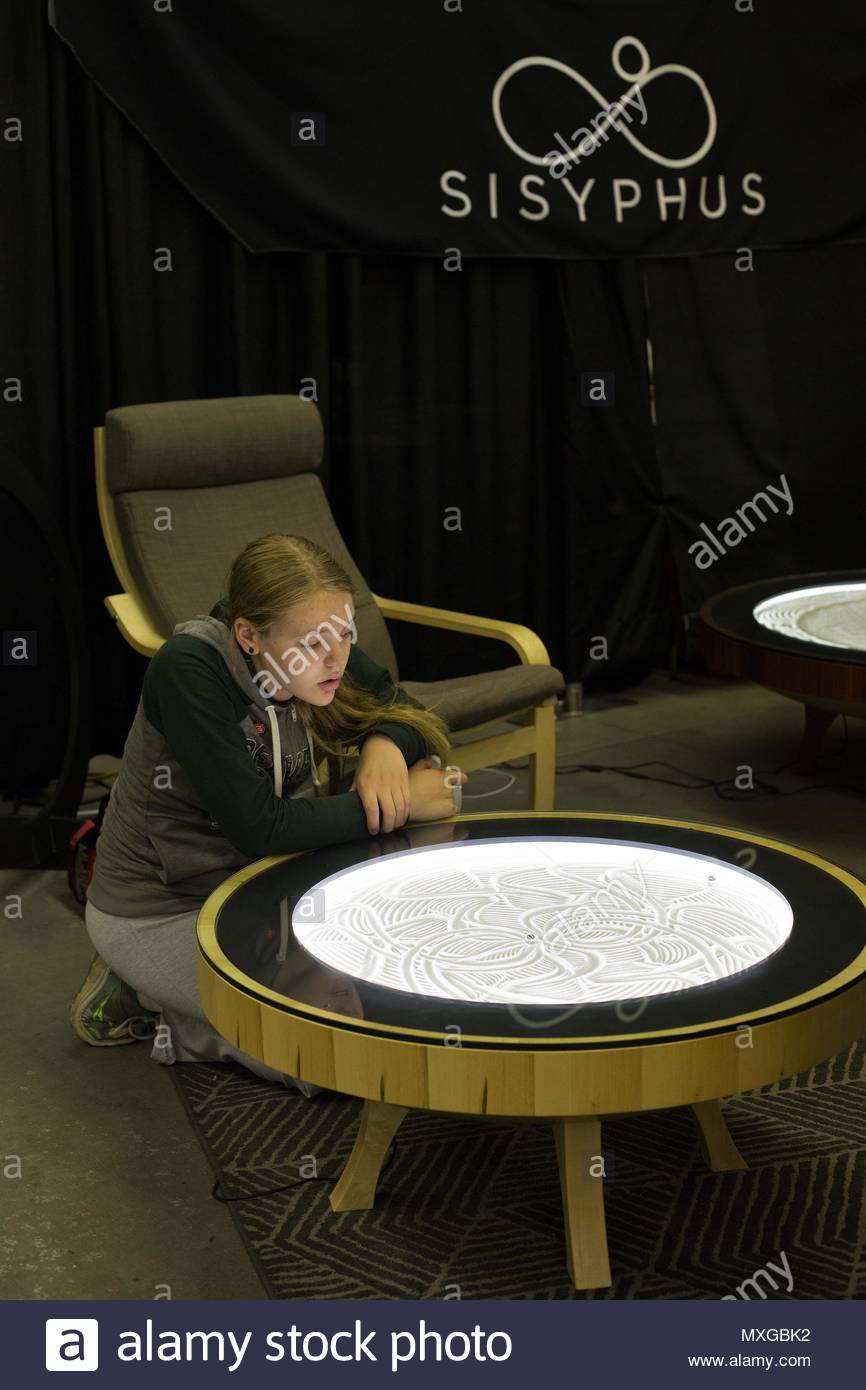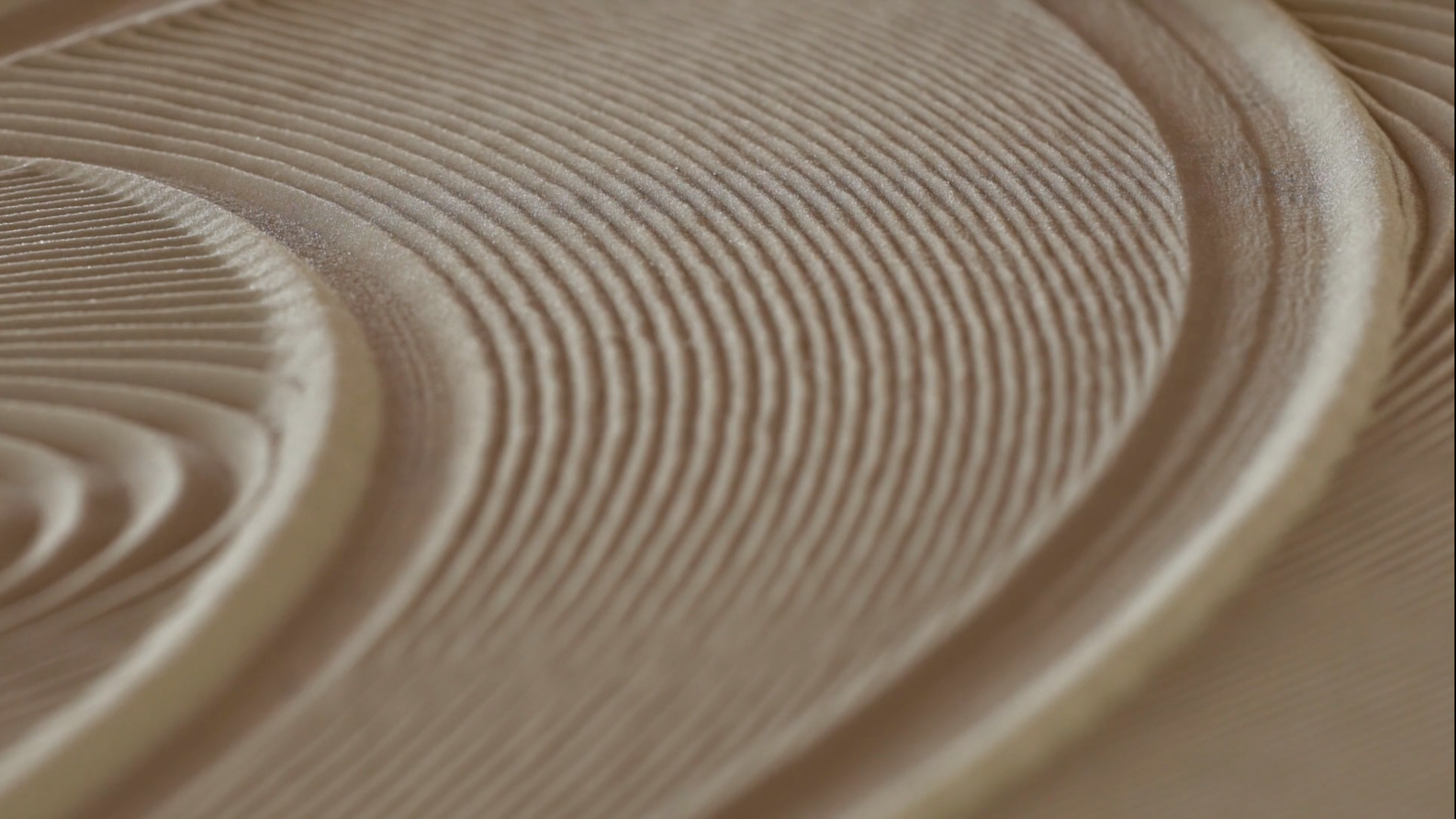
There are many others, including hand-drawn continuous line drawings. This is likely due to my never having learned to draw by hand. Most of the tracks that I compose for Sisyphus are algorithmic, meaning derived from mathematical and programmatic methods. I think it’s this juxtaposition of cutting-edge tech being used for something as whimsical as creating ever changing sand dunes that catches us off guard, producing enchantment. Looking under the table, one can see the robotic mechanism and circuit boards with blinking LEDs-definitely complex technology under the hood. But even very young children quickly intuit that a magnet is involved. And the steel ball appears to be rolling as if by a magical force, guiding it to build intricate patterns. Nothing is more “natural” and familiar than the way sand behaves on a shoreline or in the desert. Sisyphus “works” on both emotional and analytic levels at the same time. Talk about the mystery and curiosity they generate in people: What are you communicating artistically with these works? As a music player plays music tracks stored as files and organized into playlists, Sisyphus does the same, only its tracks are visual. Though the Sisyphus mechanism is polar (not XY), the idea is the same: By blending movement along two independent axes, it can move a magnet under the sand field very precisely along predetermined paths stored in files within a small computer inside the table.

To control movement in 2D requires two motors-like the two knobs on an Etch A Sketch. Sisyphus is a two-dimensional drawing machine.
#Magnetic sisyphus table free
Sisyphus was my first CNC machine to break free of the studio, as a kinetic sculpture on its own. I built one machine after another, and got better and better at it-both the hardware side and writing my own programs to control the machines. My solution was to scrounge parts of scrapped automation equipment on the local Twin Cities market (think 3M, Control Data, Honeywell, Seagate). At the time, although very common in industrial settings, the ability to move cutting tools under computer control was very expensive (and still is). In 1998 a fellow artist jokingly challenged me: Could I build a robot to rake a Zen garden? I’d spent the early ’90s learning to build my own CNC machines with the goal of using them to make sculpture. Where did the ideas from these tables come from? When we asked Shapiro to shed light on our questions about Sisyphus, he was happy to oblige.
#Magnetic sisyphus table full
In fact, Shapiro and his collaborator Micah Roth started Nordeast Makers, a community space with lots of toys, including CNC routers, liquid-cooled laser cutters, high-resolution 3D printers, a vinyl cutter, full woodworking shop, and electronics lab. The brainchild of Bruce Shapiro, who left his job as a doctor 25 years ago to follow his passion for using computer-controlled machines to create art, the Sisyphus tables are part of the growing Maker Movement in the Twin Cities.

As a musical instrument plays songs, Sisyphus plays paths.” Sisyphus is a kinetic art piece: It is an instrument. In our art, Sisyphus is a kinetic sculpture that rolls a ball through sand, forever creating and erasing beautiful patterns.

“In Greek mythology,” explains text on the product’s website, “Sisyphus was condemned to roll a boulder up a mountain for all eternity.

These art functional objects are known as Sisyphus, and are tables that combine kinetic art, technology and design into a mesmerizing process of meditative beauty. Captivating and curious, the tables gave rise to many questions: Is it random or planned? If planned, what’s guiding the small ball? How does the ball transform the exquisitely detailed ridges, tunnels and lines into mandala-like patterns? Who thought this up and how does it work? During an art opening held at a local architecture firm, guests from 5 to 85 sat transfixed around several circular, black steel tables inside of which a steel ball moved with precision, creating intricate patterns in white sand.


 0 kommentar(er)
0 kommentar(er)
